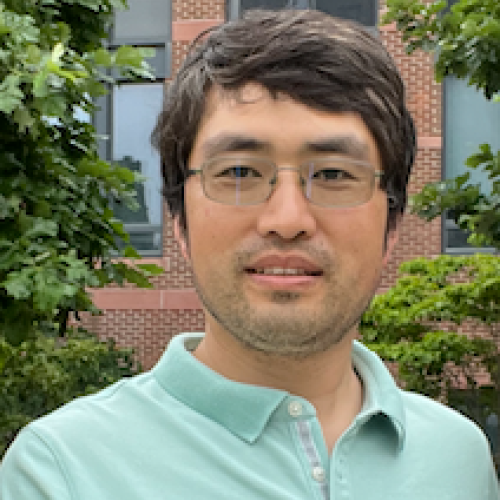Ph.D.
Bioinformatics
University of Michigan, Ann Arbor
2015

How to pronounce my name: Gene-Ray Hsu
As a computational biologist, my focus is on unraveling the intricate tapestry of genome evolution. I thrive on formulating hypotheses that delve into fundamental questions in genetic and evolutionary biology. Using functional genomic data, I rigorously test these hypotheses, seeking to understand gene regulation, phenotypic robustness, and the complexities of cancer biology within an evolutionary context.
My work extends beyond hypothesis formulation. I develop bioinformatics tools tailored to navigate the biases, noise, and intricate information within biological data. These tools play a crucial role in sifting through complexities, enabling me to extract valuable biological insights and rigorously test the hypotheses I propose.
Within the realm of genetic and evolutionary biology, my interests encompass multifaceted aspects. I am particularly passionate about exploring how genes are regulated, understanding the mechanisms behind phenotypic stability despite genetic variations, and delving into the intricate interplay between evolution and cancer biology. Through computational approaches, I am driven to uncover the underlying principles governing genetic evolution and its profound implications across various biological contexts.
Bioinformatics
University of Michigan, Ann Arbor
2015
My research in bioinformatics spans various domains, aiming to understand and predict diverse biological phenomena. Through investigations into protein structure similarity assessment, I contributed to the understanding of the significance of TM-score = 0.5 in characterizing structural similarity. Furthermore, my work has expanded to exploring mock immunoprecipitation and DNA input in ChIP-seq analysis, providing a comprehensive comparison crucial for understanding experimental nuances in chromatin immunoprecipitation sequencing. Additionally, I have contributed to developing predictive models, like GRAM, that forecast the molecular effect of non-coding variants in a cell-type-specific manner, enhancing our ability to interpret genetic variation. Moreover, my involvement in the development of CytoSVM, an advanced server for identifying cytokine-receptor interactions, underscores my commitment to developing computational tools aiding in the analysis and prediction of complex biological interactions and networks.
My research in genome evolution involves probing various aspects of molecular evolution at the genomic scale. I've delved into the functionality of human translated pseudogenes, the evolution landscape of protein structure space, and the compensation hypothesis behind disease-associated residues across species. Additionally, collaborative efforts have explored variants enriching regulatory elements that differentiate wolf and dog populations. These endeavors showcase my commitment to unraveling evolutionary mechanisms, genetic variations, and regulatory elements influencing species divergence and adaptation.
My research experience in gene regulation and cancer genomics has been a dynamic exploration into the intricate molecular mechanisms underpinning these vital biological processes. I've focused on elucidating the functionality and DNA-binding preference of transcription factors (TF) as well as regulatory networks governing gene expression, delving deep into understanding how these networks are orchestrated and modulated in normal cellular function and perturbed states like cancer. Leveraging computational methods, I've scrutinized vast datasets to identify critical genetic variations and regulatory elements implicated in oncogenesis. This journey has illuminated the complex interplay among regulatory factors, shaping my pursuit of unraveling the nuanced complexities within gene regulation in the context of genomics.